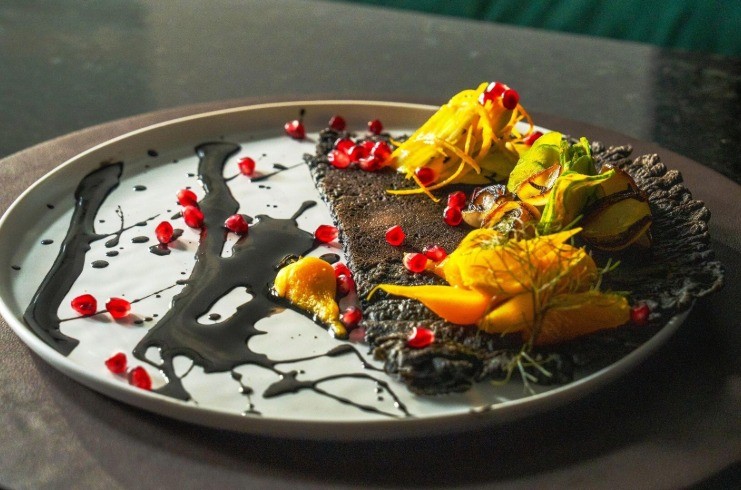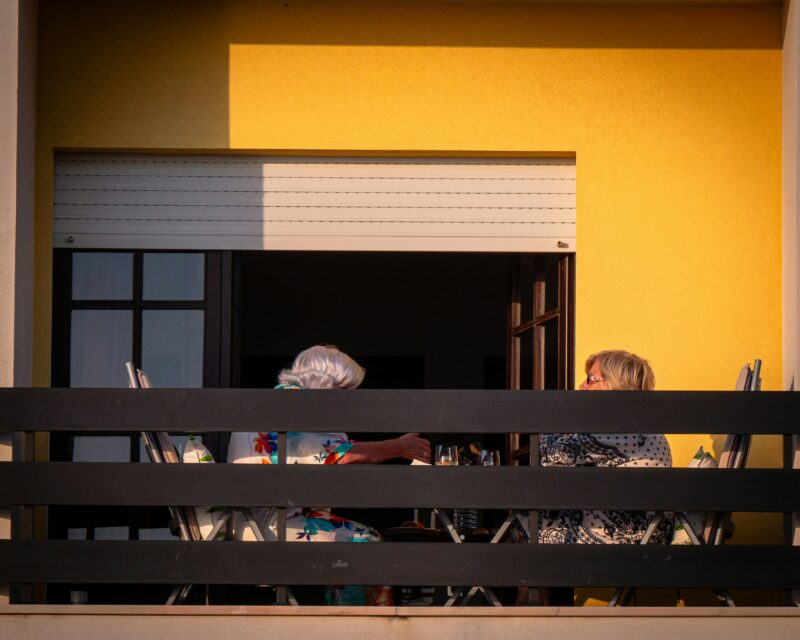
ATLANTA, Georgia—Kimpton released its Culinary + Cocktail Trend Forecast, which shares predictions from its global restaurant and beverage team for 2026.
The annual forecast underscores Kimpton’s approach to food and drink, brought to life at more than 100 restaurants and bars across its 83 properties worldwide.
Katherine Wojcik, director of programs and partnerships at IHG Hotels & Resorts, said, “As guests seek deeper connections through what they eat and drink, we’re seeing a shift toward experiences that engage every sense. Cocktails, beverage programs, and food menus have become storytelling platforms—expressions of place, culture, and creativity. Our chefs and bartenders blend global inspiration with local character to craft drinks and dishes that surprise, delight, and invite conversation. It’s not about chasing trends—it’s about leading with authenticity, artistry, and a touch of play.”
Guests of Kimpton hotels, restaurants, and bars around the world will have the opportunity to experience new flavors that bring these trends to life all year long. This year’s Kimpton Culinary + Cocktail Trends are:
Below are findings from the Culinary + Cocktail Trend Forecast for 2026
2026 Culinary Trends
Charcoal
Charcoal will experience a rise in popularity, both as an ingredient and as a medium for cooking. Whether it’s protein or veggies, guests can expect to specifically experience Binchotan, a Japanese white charcoal. Expect to see menu items like charred cauliflower satay with lemon cream at select properties in the coming months.
Pancakes
International pancake variations like Moroccan Msemen, Korean Hotteok, and Vietnamese Bánh Xèo will serve as a base for flavor pairings. These globally inspired pancake combinations, such as the paella-inspired martini with blinis and caviar on the side found on the menu at Kimpton Sawyer Hotel in Sacramento, are among the new varieties.
Heritage & Third-Culture Cuisine
In 2026, heritage and third-culture cuisine will become a popular way to celebrate multiple cultures all in one dish. Menu items will emphasize personal, lived experiences within one or multiple cultures. This style combines influences from the chef’s multicultural upbringing. This upcoming trend can be found at Kimpton KAFD Riyadh, where a terrine of local lamb is served with fresh mixed leaves and herbs alongside a lamb chamomile demi-glace.
Citrus
Varieties and unique hybrids of citrus, like Calamansi, Hallabong, and Sumo, will appear on food and drink menus. These fruits bring tartness, sweetness, and aroma, inspiring chefs and mixologists to experiment with new pairings and presentations like yuzu-infused cocktails and Calamansi–miso dressings for seafood or salads.
Dips
Many consumers are skipping a larger traditional main course in favor of smaller plates. This will see the in-between eating aesthetic evolve as entrée-inspired dips are updating classic dishes like gumbo and cacio e pepe to create bite-sized offerings of classic meals.
Lamberto Valdez Lara, executive chef at Kimpton Maa-Lai Bangkok, said, “2026 will be the year that packs a ‘crunch.’ Chefs are layering textures to create dynamic dishes that turn techniques and ingredients into added palate experiences. We’re also seeing charcoal come to the fore in a big way. This is down to its ability to impart rich flavor with global influences—like Korean Hotteok or Vietnamese Bánh Xèo. Comfort foods like pancakes are being redefined through a global lens, while natural botanicals and unique citrus varieties bring freshness and vibrancy to the plate.”
Cocktail Trends
- Botanicals Swap Out Sugar: As consumers embrace natural ingredients, commonly added sugar will give way to fruit and botanicals like rose, elderflower, and cherry. Cocktails like “Souq of Byblos” use rose to sweeten a combination of gin, grapefruit, lemon, bitters, and cardamom at Ladyhawk at Kimpton La Peer Hotel in West Hollywood.
- Texture Takes Over: Textures, ranging from crispy and crunchy to foamy and fizzy, will take over in 2026. Whether it’s a matcha with creamy foam and a crunchy topping or gummy boba in a silky-smooth latte, across the kitchen and bar, chefs and bartenders will experiment with ingredients that add textural complexity and juxtaposition across the palate.
- Banana Milk: Popular in Korea, this milk alternative, often paired with coffee and espresso, will gain broad appeal globally in the coming months. With a natural sweetness and smooth, silky texture, banana milk can be paired with other sweet flavors like whipped cream, cinnamon, caramel, and chocolate, and it will be available on request at select Kimpton properties worldwide.
- Cultivating Coffee Cultivars: Specialty beans, terroir flavors, climate-resilient types, co-fermented and seasonal blends will drive new coffee trends in 2026. Fresh varietals of beans like Colombian Gesha, Ethiopian Hambela, Ethiopian Uraga Heo, Papua New Guinea Volcanic Robusta, and Lijang Yunnan Bam will gain traction at Kimpton properties around the world.
- The Newest Spritz: The Garibaldi: The Garibaldi will become the new favorite aperitivo cocktail. Low ABV but high in refreshing flavor, menus will include variations using combinations of unique citrus and Italian aperitifs.
- Layered Drinks: Blended beverages will be replaced with drinks offering distinct layers of flavor. From cocktails to coffee beverages, layered beverages will bring together new taste pairings.
- Garden to Glass: Plants: With the popularity of herbal and earthy drink flavors on the rise, plants including aloe, chayote, eucalyptus, and pepperberry will appear in more cocktails as the latest evolution of the industry’s garden-to-glass movement. Garden to glass offers guests the opportunity to taste the freshest seasonal, locally sourced ingredients possible, like in the Alianthus—a cocktail that balances the flavor profile of black pepper, ginger, and lemon grass that’s featured at Kimpton Da An – Taipei in Taiwan.
- Cocktails Get Techy: Bars will transition from smoke to aromatic machines and adapt innovative processes, including switching and sous-pression that rely on deep-freezing to alter or release flavor. This trend can be seen in the cocktails “Berry Opera,” which uses lacto-fermentation to create a homemade berry vinegar that pairs with peach, raspberry, and hibiscus tea; and “Almost Famous,” which leverages molecular gastronomy spheres to blend fat-washed whiskey with black truffle oil, curaçao, chocolate absinthe, and orange bitter spheres. These offerings can be found on bar menus at Kimpton Qiantan Shanghai.
- Wine: Asia-Pacific on the Rise, Bordeaux is Back: Asia-Pacific wines and fizzy Spanish wine cocktails, like Kalimotxo, Tinto Verano, and Rebujito will grow in global popularity, while Bordeaux, sidelined for other popular grapes over the years, will enjoy a comeback on wine menus, including those of Kimpton Qiantan Shanghai. With that, wine cocktails are rising to the surface, with mixology bringing to life beverages like “Sakura Sake Spritz,” which mixes Sake, gin, Sakura, lime juice, and Cava; and “Bordeaux Berry Fizz,” which features Bordeaux, white wine, blackberry liqueur, lemon juice, and simple syrup.
Jim Wrigley, Beverage Manager of Kimpton Seafire Resort + Spa, said, “Tech is transforming every corner of our lives, and our drinks will be no exception. 2026 will see more innovations like aroma technology and cryogenics release new flavors at the bar. We’ll also see layered drinks that are as beautiful to look at as they are to taste, a re-envisioning of the garden-to-glass botanical cocktails, and stalwart spirituous serves superseded by low-ABV alternatives like The Garibaldi. Ingredients like banana milk, with its natural sweetness and velvety texture, will allow us to reimagine what comfort in a cup looks like, as guests seek real experiences amongst all of the screen time. It’s a time of curiosity and creativity, especially for Kimpton.”








